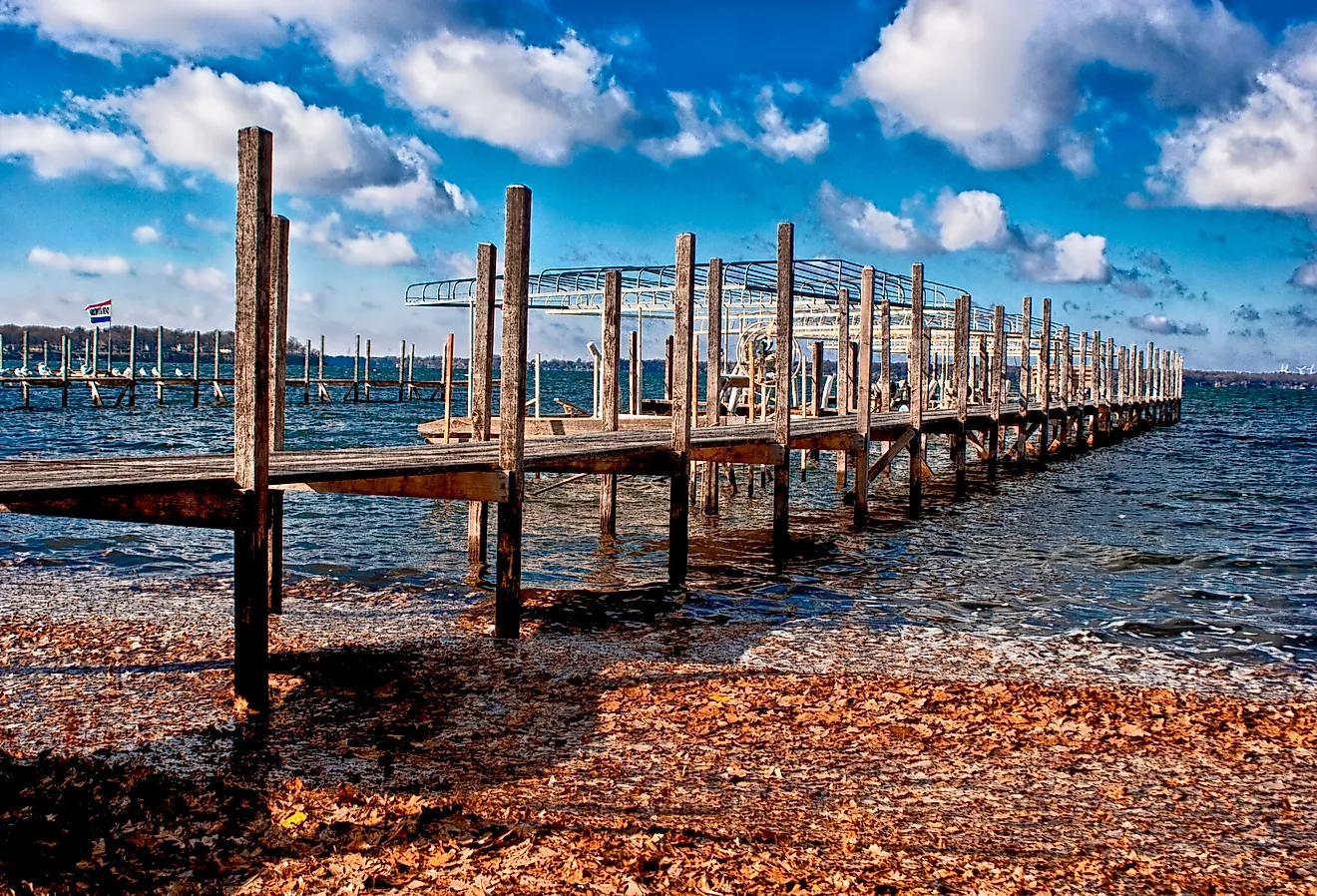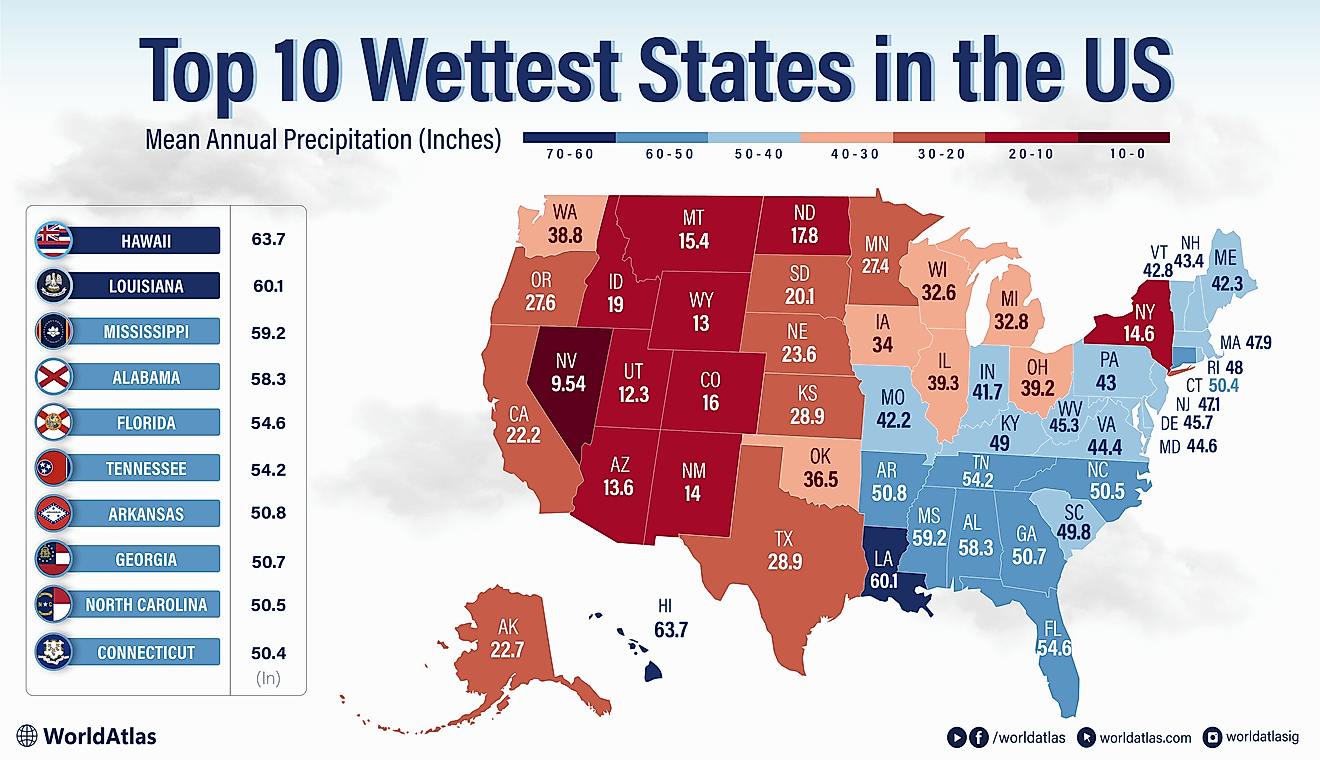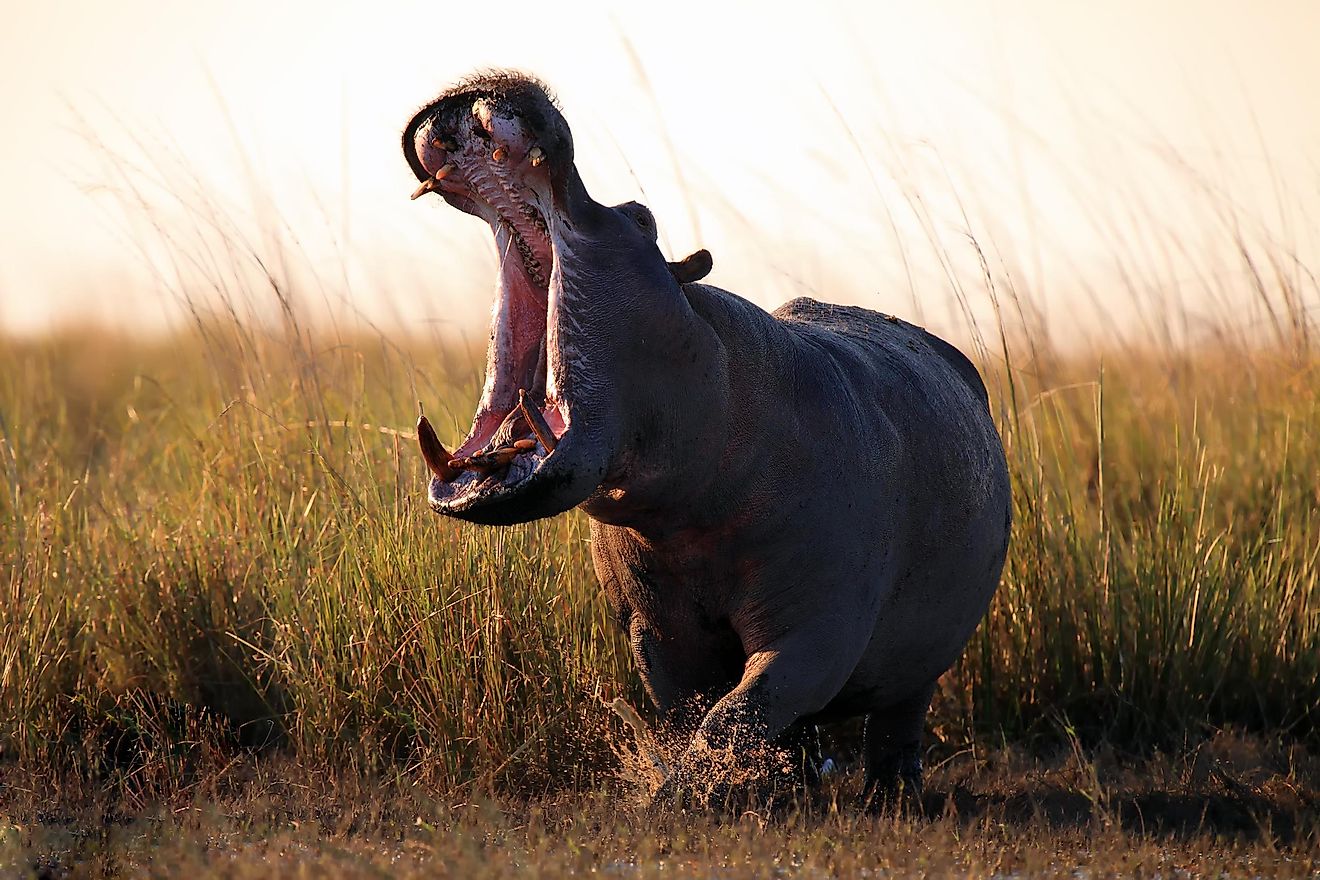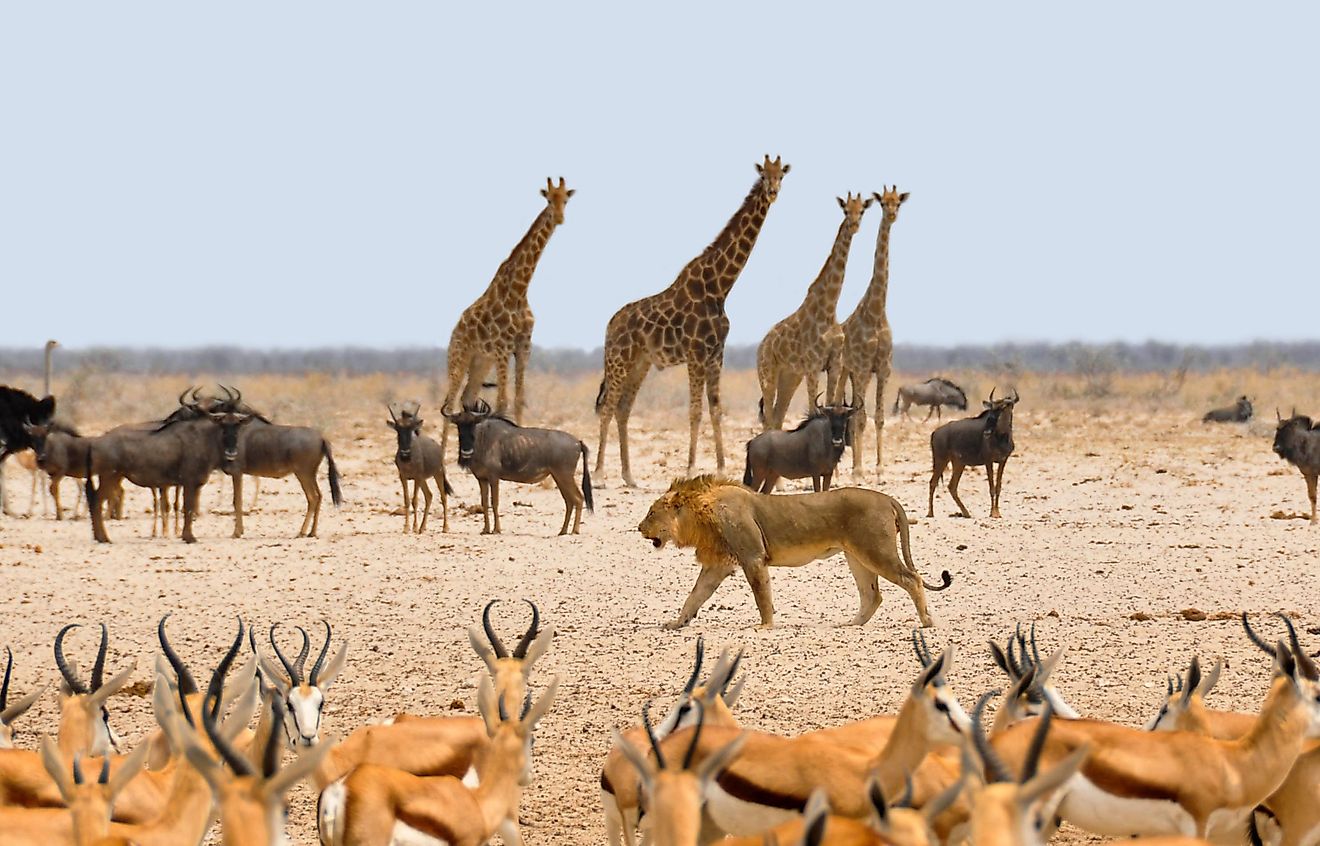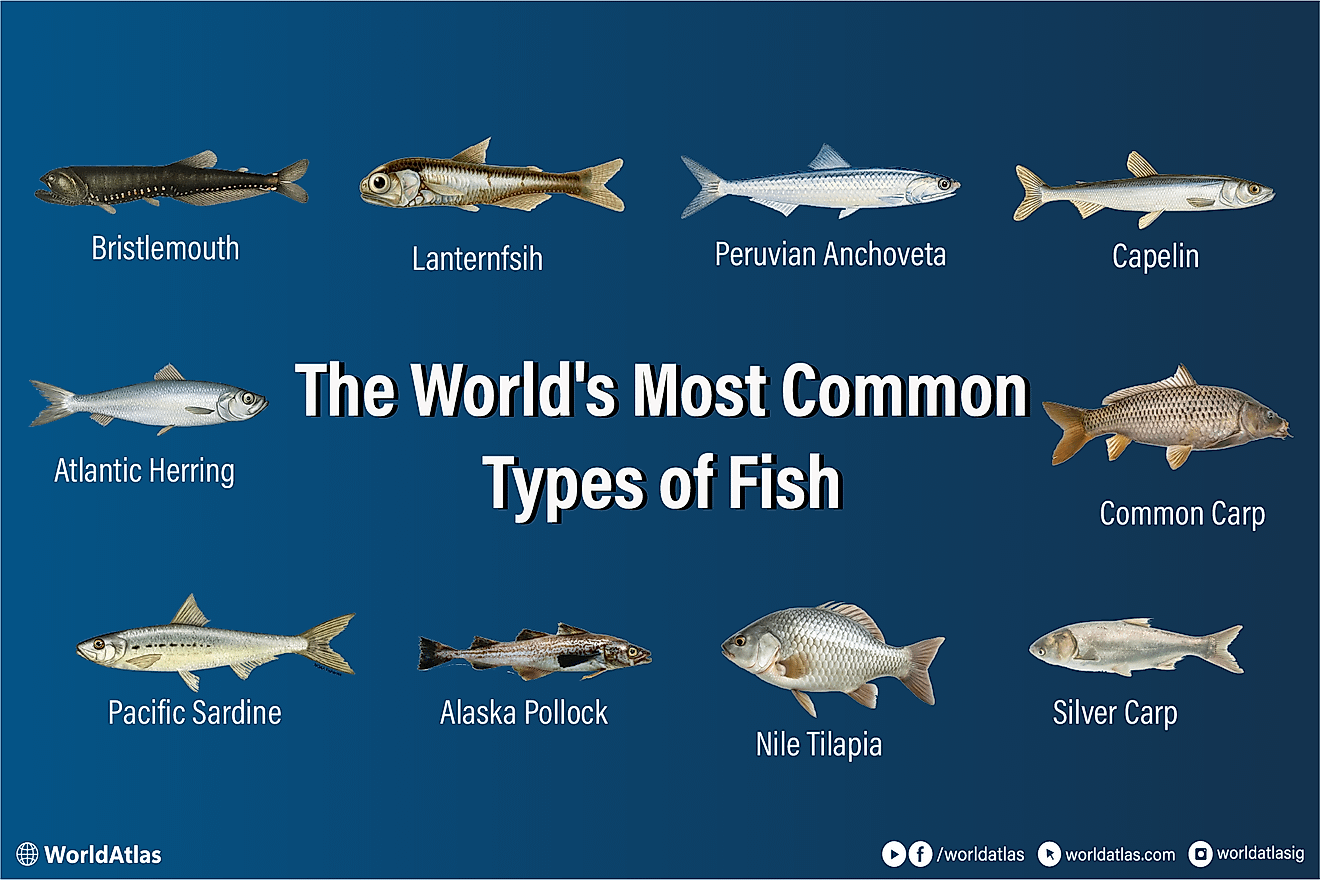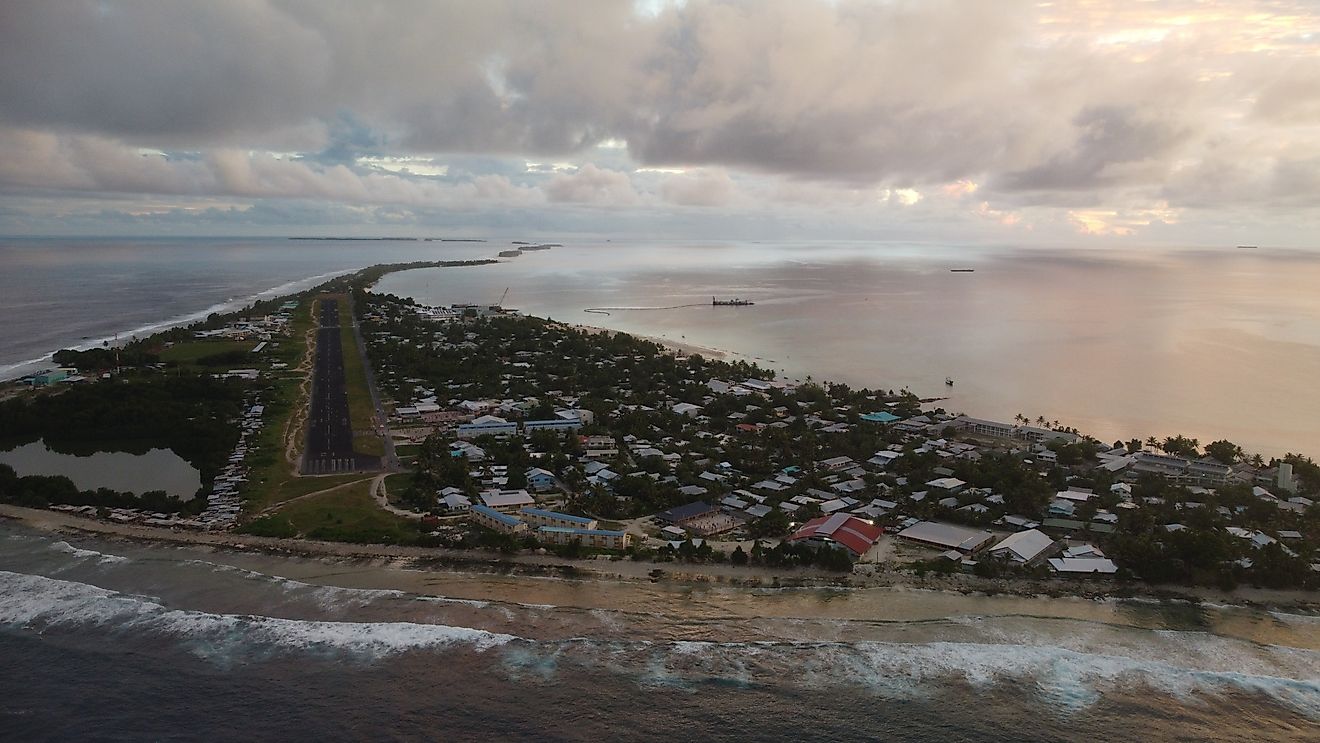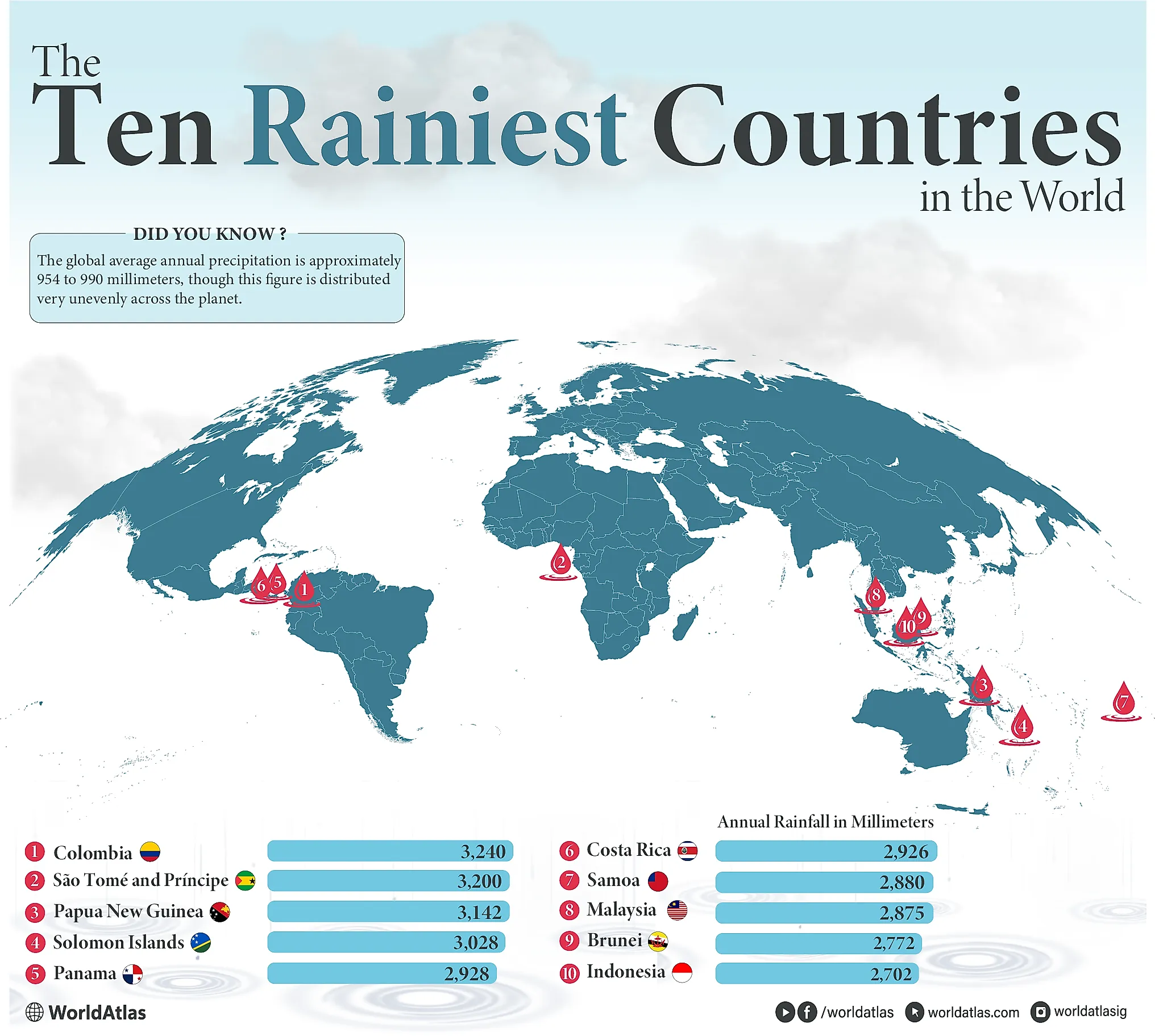
The 10 Rainiest Countries In The World
After a long rainy spell, it can be easy to convince yourself that nobody in the world has to bust out their umbrella as often as you do. But in some countries, a torrential downpour or a week-long run of rainy days is nothing to bat an eyelash at. Thanks to the various quirks of geography and climate, these ten countries get more precipitation annually than anywhere else in the world. Think your town is the rainiest around because a storm blew through just after you washed your car? Try these precipitation stats on for size!
The 10 Rainiest Countries In The World
| Country | Annual Rainfall in Millimeters |
|---|---|
| 10. Indonesia | 2,702 |
| 9. Brunei | 2,772 |
| 8. Malaysia | 2,875 |
| 7. Samoa | 2,880 |
| 6. Costa Rica | 2,926 |
| 5. Panama | 2,928 |
| 4. Solomon Islands | 3,028 |
| 3. Papua New Guinea | 3,142 |
| 2. Sao Tome & Principe | 3,200 |
| 1. Colombia | 3,240 |
10. Indonesia
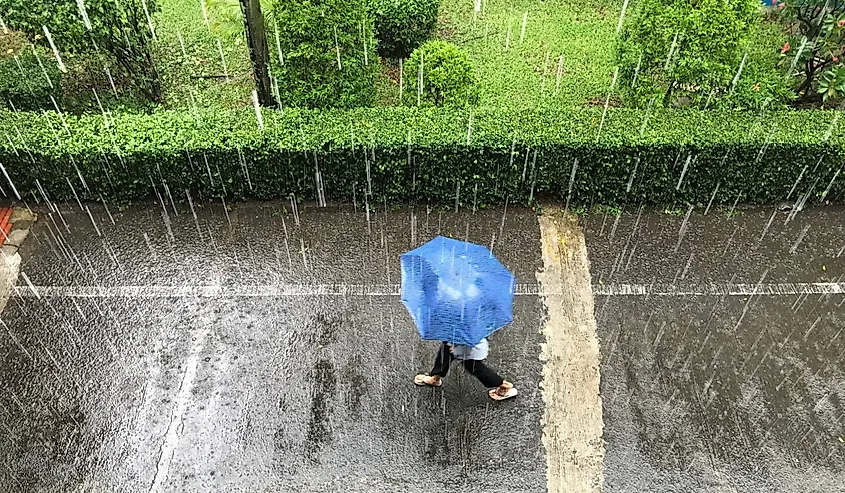
Most of the rainiest countries worldwide are pretty small. It makes sense: in order to make this list, the entire country has to average staggeringly high annual precipitation totals, and most large countries have enough variation between their wetter and drier regions that they don’t crack the top ten. The glaring exception to this is Indonesia, the world’s fourteenth-largest country by land area.
There are a couple of reasons for this, many of which Indonesia shares with other countries in the top ten. Firstly, it’s near the equator, located in what’s called the Intertropical Convergence Zone (ITCZ). As northern and southern trade winds meet at these latitudes, turbulent atmospheric conditions are perfect for brewing up precipitation-heavy convective storms. This is one of the many reasons that so many of the top ten rainiest countries worldwide are found in the ITCZ latitudes. And finally, there’s the monsoon.
Like many countries in Southeast Asia, Indonesia experiences heavy seasonal rains called monsoons. From March to September, wind patterns in the region cause torrential rains to drench much of Indonesia for months on end. Though exact amounts of rainfall vary throughout the country, according to the World Bank, Indonesians experience an average of 2,702 millimeters of rain (that’s nearly 9 feet) per year.
9. Brunei
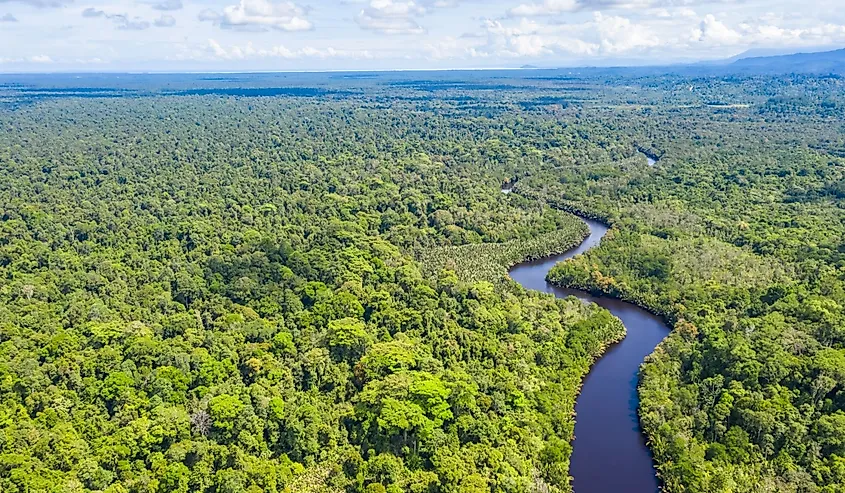
Okay, so this one is pretty obvious: Brunei is a certain bet for one of the world’s rainiest climates because it’s located on a small portion of Borneo, one of Indonesia’s major islands. All of the features of an equatorial monsoon climate that we talked about in Indonesia are applicable to Brunei, too. However, the cycle of wet and dry seasons that shapes Indonesia’s rainfall patterns looks very different in Brunei.
In Indonesia, the months between October and February are largely dry. Not so in Brunei, where one monsoon blows from December to March and the other from May to September. That adds up to an annual average of about 2,772 millimeters, with inland regions of the country seeing significantly higher rainfall every year.
8. Malaysia
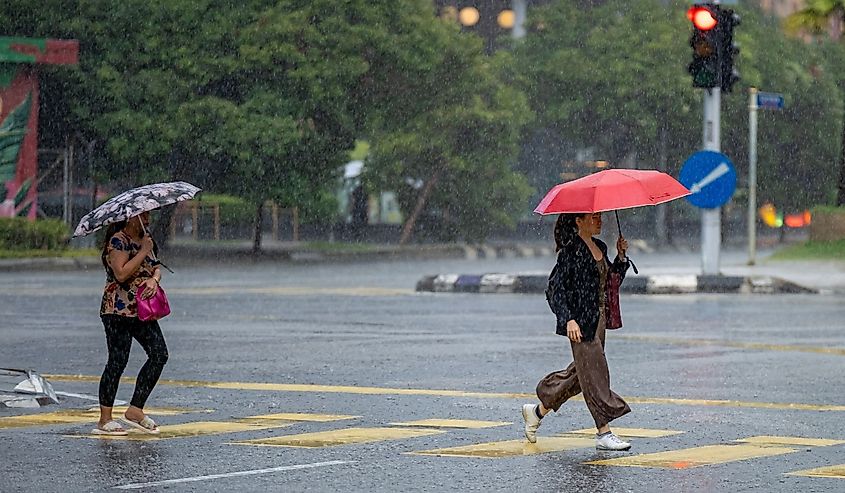
Clocking an annual average of 2,875 millimeters of rain, Malaysia is both geographically near and climatologically very similar to Indonesia and Brunei. Its monsoon seasons, however, are much more like those of Brunei than the more varied patterns found in Indonesia. Malaysia experiences roughly the same dual monsoon seasons and intermonsoon periods as Brunei.
One unique feature of Malaysia’s climate that is worth noting is the effect of its topography. Malaysia is a very narrow country, so even in inland areas, the moderating influence of the ocean shapes the climate. This is part of the reason for its uniformly heavy rainfall.
7. Samoa
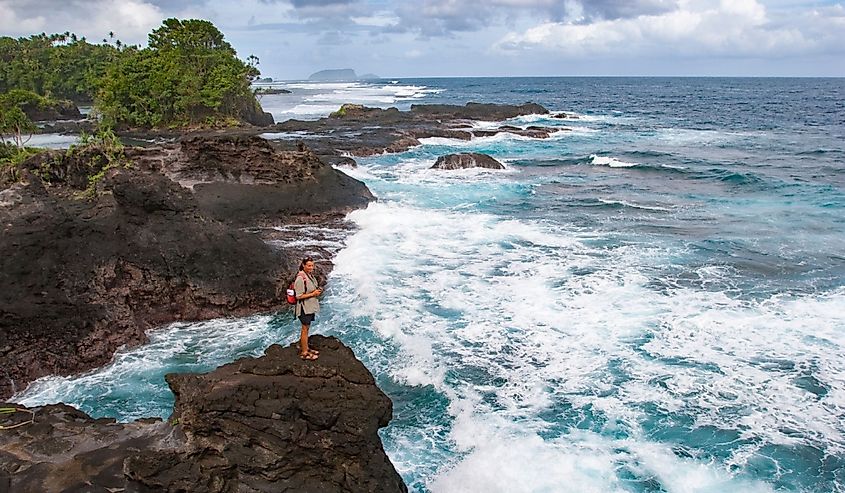
Maritime Southeast Asia is home to many of the world’s rainiest countries, but so is the South Pacific. With countless equatorial islands surrounded by the ocean and subject to its climatic influence, there are bound to be a few in the top ten. Indeed, there are: the first of them is Samoa.
Like all of the rainiest countries on Earth, Samoa has a tropical climate. Easterly winds contribute to uniformly high rainfall across the islands, but also ensure that one side is decidedly wetter than the other. While the rainiest parts of Samoa in the southeast can see up to 6,000 millimeters of rainfall a year, western parts of the islands can see as little as 2,000 millimeters due to the rain shadow effect of Samoa’s mountains. Thus, the country’s average rainfall amounts to about 2,880 millimeters.
6. Costa Rica
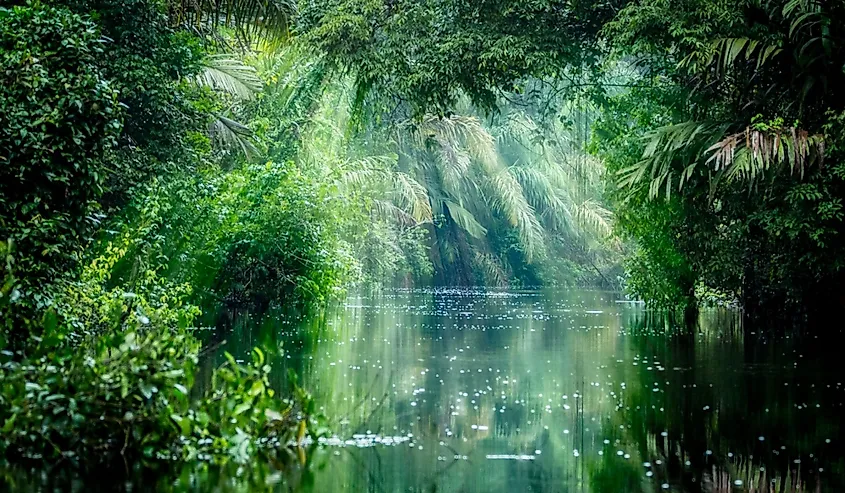
Famous for its eco-friendly outlook and booming tourism industry, Costa Rica doesn’t immediately come to mind as a potential precipitation hotspot. However, the tropical rainforest that draws so many travelers to the country couldn’t thrive without some serious rainfall, and Costa Rica gets it to the tune of 2,926 millimeters on average per year.
Much of that rain is due to the country’s unusually varied topography. Costa Rica is small, but as a mountainous country on the Ring of Fire between two oceans, it packs in a dizzying number of microclimates. Volcanic activity, uneven topography, and the sandwiching of the Pacific Ocean on one side and the Caribbean Sea on the other influence the movements of the Trade Winds that bring annual wet season rains.
But if you’re planning a trip, don’t worry: Costa Rican rainstorms tend to take shape in the afternoon and wring themselves out by evening, so your whole day won’t be forfeit if there’s rain in the forecast.
5. Panama
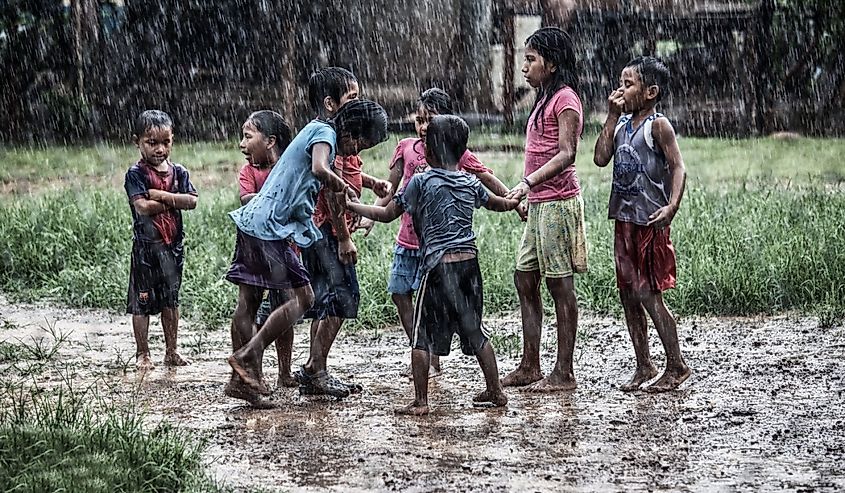
Located directly south of Costa Rica, which has the same unusual geography, it’s no surprise that Panama is another of the rainiest countries in the world. The numbers are nearly identical: 2,928 to Costa Rica’s 2,926. Fittingly for a country best known worldwide for its canal, Panama is an extraordinarily waterlogged place. Like Costa Rica, it’s situated between the Pacific Ocean and Caribbean Sea, so rain-producing trade winds converging over a relatively narrow and mountainous landmass make it one of Central America's wettest and lushest countries—or anywhere.
4. Solomon Islands
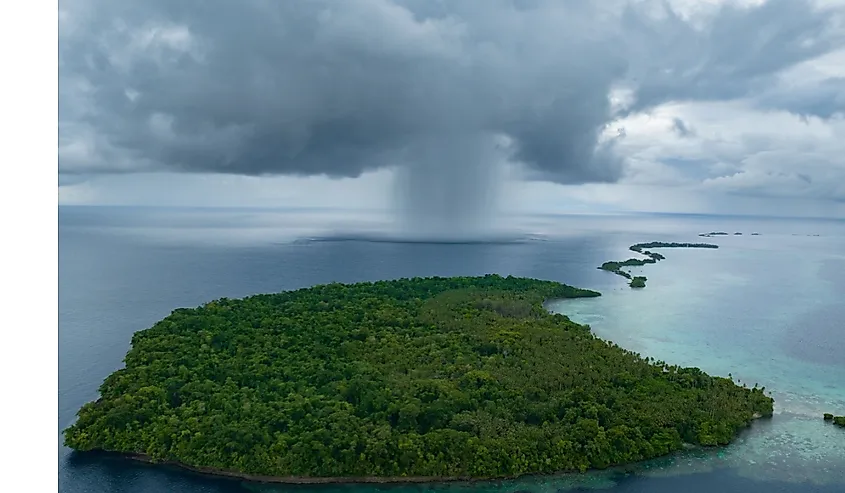
Another South Pacific entry to crack the top 10, the Solomon Islands are the first to crack the 3,000 millimeter mark. As of 2021, the World Bank listed the average annual rainfall of the Solomon Islands at 3,028 millimeters—that’s nearly ten feet of rain every year in a country the size of the state of Maryland. So what, besides the obvious equatorial location, makes the Solomon Islands so remarkably rainy?
These islands are equally impacted by the annual monsoon and by the Equatorial Trough. This low-pressure system migrates seasonally in a band-like pattern following the movements of the sun. When it reaches the Southern Hemisphere, it’s located near the Solomon Islands, which causes extensive rainfall during the winter monsoon months. The fairly uniform climate of the Solomon Islands ensures that most of the country experiences these same heavy rains, with few dry areas.
3. Papua New Guinea
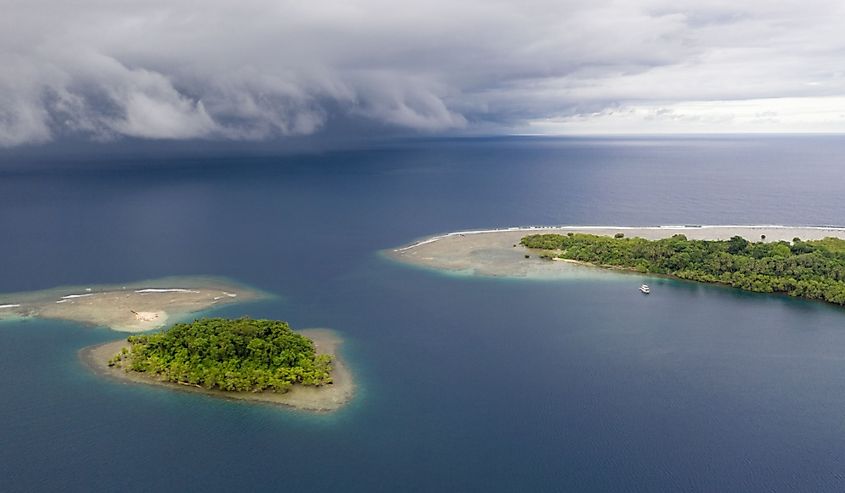
Papua New Guinea is often seen as an island border between the ecosystems of Southeast Asia and the South Pacific. Both ecologically and culturally, researchers have identified the country as the southernmost holdout of characteristically Asian phenomena before the transition to characteristically Australian and Oceanic features. It’s similarly unique when it comes to climate.
Papua New Guinea's topography is highly varied because it sits at the meeting of two tectonic plates. It’s surprisingly mountainous for such a small country, and those elevation variations mean unusual temperature variations for a tropical area. Thus, the trade winds and monsoons that reach Papua New Guinea don’t have the same impacts everywhere. That said, they’re powerful enough to bring an average of 3,142 millimeters of rain per year, a number that is significantly higher in many areas.
2. Sao Tome & Principe
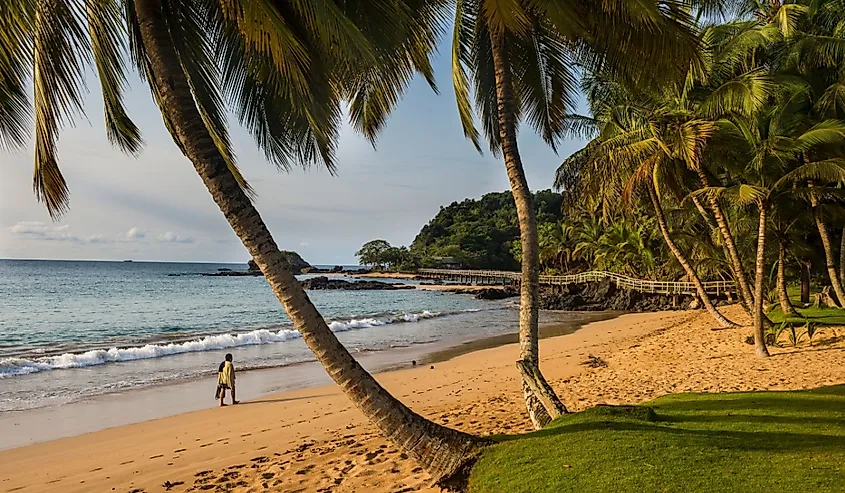
The sole African entry on this list, Sao Tome & Principe, is—unsurprisingly—an island. And its climate is truly extraordinary, even among the rainiest countries in the world. Many equatorial nations experience similar amounts of rainfall thanks to the ITCZ and monsoon cycles, but few get as much as Sao Tome & Principe. Why? Because the rainy season in Sao Tome & Principe lasts a whopping average of nine months out of every year.
While it’s not the rainiest country in the world by numbers, São Tomé & Príncipe is highly unusual for its sheer number of rainy days. Only during a short period in the winter, typically between December and January, does São Tomé & Príncipe get a reprieve from this relentless rainy season. Unsurprisingly, the country nets 3,200 millimeters of rain on average—about 10.5 feet.
1. Colombia
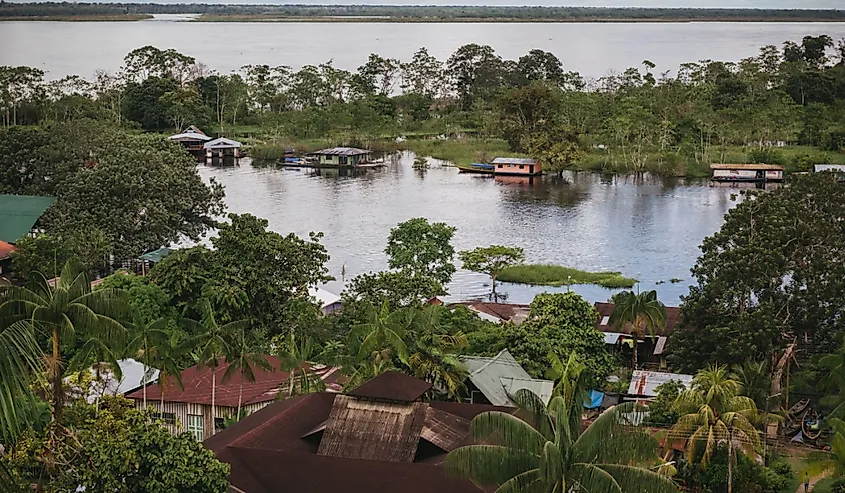
South America’s only entry in the top 10, as of 2021 data from the World Bank, is also the rainiest country in the world. A much larger country than most of the others on this list, Colombia’s heavy rains are the result of a perfect storm of equatorial convection and geography. That combination gives Colombia a slight edge, with 3,240 millimeters of average annual rainfall, the highest of any country as of 2021.
Colombia lies near the equator and experiences all the atmospheric patterns characteristic of those latitudes, but its topography makes it so uniquely rainy. The Andes Mountains flank Colombia’s eastern border like a spine, which means that hot sea-level temperatures quickly cool as humid air ascends. As such, altitude has a major impact on Colombia’s climate zones, and often shapes the patterns in which rain falls — hence why you’ll find dry savannah and tropical rainforest in Colombia. That the average precipitation numbers still even out to be the highest in the world speaks to the unbelievably rainy climate of the tropical lowlands, where a hot, humid climate fed by moist air from the Caribbean Sea nurtures some of the lushest rainforests in the world.
A rainy day is not all that random. From atmospheric pressure to mountain geography, countless factors shape the way precipitation moves and behaves. So, these top ten rainiest countries make the list for good reason: they’re the places where the perfect storm of factors occurs to converge. Remember that the next time you’re tempted to shake your fist at whatever powers that be decided to rain on your freshly-washed car, and you’ll probably feel a little bit less slighted. Trust us: it’s not you, it’s the ITCZ.
